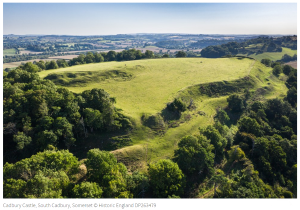 Historic England has revealed the historic sites most at risk of being lost forever as a result of neglect, decay or inappropriate development, by publishing the annual Heritage at Risk Register 2020.
Historic England has revealed the historic sites most at risk of being lost forever as a result of neglect, decay or inappropriate development, by publishing the annual Heritage at Risk Register 2020.
image: Historic England website
…buildings and places … can help level up economic opportunity, support skilled local construction jobs…
…80% of residents believe local heritage makes their area a better place to live…
HE writes:
The register provides an annual snapshot of the critical health of England’s most valued historic places and those most at risk of being lost.
Over the last year, 181 historic buildings and sites have been saved thanks to the determination of local communities, charities, owners, local councils and Historic England, who together want to see historic places restored and brought back to life. Examples include an 800 year old footpath in North Yorkshire, once used by Cistercian monks to transport goods, now saved by a local history group; the church in London where Mary Wollstonecraft, the ‘Mother of Feminism’, worshipped has been restored thanks in large part to the congregation’s dedication; and the lush hillfort in Somerset which is thought to be King Arthur’s ‘lost Camelot’ has been restored thanks to essential partnership working.
This year has been challenging but looking after and investing in the historic places that help to define our collective identity can contribute to the country’s economic recovery. The buildings and places rescued from the Heritage at Risk Register can help level up economic opportunity, support skilled local construction jobs, build resilience in private and public organisations and boost tourism.
Our historic places have also provided an anchor for local communities during these uncertain times. Heritage has a proven positive impact on people’s quality of life and 80% of residents believe local heritage makes their area a better place to live. It can also help support community resilience, instil pride and builds confidence that communities can ‘build back better’.
“It is the varied tapestry of our historic places that helps us define who we are. In testing times such as these, heritage can give us a sense of continuity and bring us solace. We also know that investing in historic places can help boost our economic recovery. The 181 places rescued from the register this year show us that good progress is being made, but there is still a long way to go. Many more historic buildings and places need caring for, financial support, strong partnership working and community engagement to give them a brighter future.”
Duncan Wilson, Chief ExecutiveHistoric England
National headline statistics
- Across the country 181 entries have been removed from the Register (for positive reasons), while 216 entries have been added because of concerns about their condition.
- Over the past year, Historic England has spent nearly £8.96 million in grants on helping some of the country’s best loved and most important historic sites on the Heritage at Risk Register.
- The Heritage at Risk Register 2020 reveals that in England:
- 1,475 Buildings or Structures (Grade I and II* listed buildings and structural scheduled monuments across England, plus Grade II listed buildings in London)
- 932 places of worship
- 2,090 archaeology entries (non-structural scheduled monuments),
- 103 parks and gardens
- 3 battlefields
- 3 protected wreck sites
- and 491 conservation areas
…are at risk of neglect, decay or inappropriate change.
- In total, there are 5,097 entries on the 2020 Heritage at Risk Register, 24 more than in 2019.
Due to the restrictions of Covid-19 we have only been able to assess sites and collect data where it has been safe to do so. This has given us a helpful temperature check of the condition of our historic environment in the last 12 months, but it has not been possible to carry out analysis of trends as we have in previous years…..

